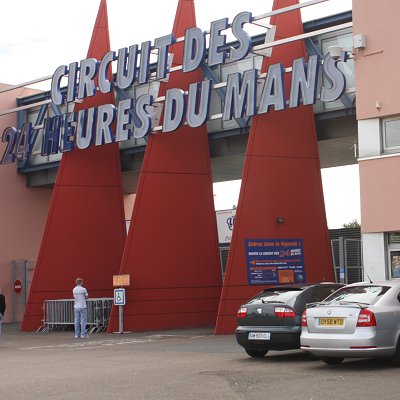
Like us on Facebook
PLACE NAMES


 
|
|
Le Mans
|
 |
|
First mentioned by Claudius Ptolemy, the Roman city Vindinium was the capital of the Aulerci, a sub tribe of the Aedui. Le Mans is also known as Civitas Cenomanorum (City of the Cenomani), or Cenomanus.
Their city, seized by the Romans in 47 BC, was within the ancient Roman province of Gallia Lugdunensis. A 3rd-century amphitheatre is still visible. The thermae were demolished during the crisis of the third century when workers were mobilized to build the city's defensive walls. The ancient wall around Le Mans is one of the most complete circuits of Gallo-Roman city walls to survive.
As the use of the French language replaced late Vulgar Latin in the area, Cenomanus, with dissimilation, became known as Celmans. Cel- was taken to be a form of the French word for "this" and "that", and was replaced by le, which means "the".
Gregory of Tours mentions a Frankish sub-king Rigomer, who was killed by King Clovis I in his campaign to unite the Frankish territories.
As the principal city of Maine, Le Mans was the stage for struggles in the eleventh century between the counts of Anjou and the dukes of Normandy. When the Normans had control of Maine, William the Conqueror successfully invaded England and established an occupation. In 1069 the citizens of Maine revolted and expelled the Normans, resulting in Hugh V being proclaimed count of Maine. Geoffrey V of Anjou married Matilda of England in the cathedral. Their son Henry II Plantagenet, king of England, was born here.
Main sights
- Le Mans has a well-preserved old town (Cité Plantagenêt, also called Vieux Mans) and the Cathédrale St-Julien, dedicated to St Julian of Le Mans, who is honoured as the city's first bishop.
- Remnants of a Roman wall are visible in the old town and Roman baths are located by the river. These walls are highlighted every summer (July and August) evening in a light show that tells the history of the town.
- Arboretum de la Grand Prée
- Part of the former Cistercian abbey de l'Epau, founded by Queen Berengaria and currently maintained in extensive grounds by the Département de la Sarthe.
- Jardin des Plantes du Mans
- Musée de la reine Bérengère, a museum of Le Mans history located in a gothic manor house.
- Musée de Tessé, the fine arts museum of the city, displaying painting (including artworks by Philippe de Champaigne, Charles Le Brun, François Boucher, John Constable, Ingres, Théodore Géricault and Camille Corot) and archaeological collections as well as decorative arts.
The first French Grand Prix took place on a 64-mile (103 km) circuit based at Le Mans in 1906.
Since the 1920s, the city has been best known for its connection with motorsports. There are two official and separate racing tracks at Le Mans, though they share certain portions. The smaller is the Bugatti Circuit (named after Ettore Bugatti, founder of the car company bearing his name), a relatively short permanent circuit, which is used for racing throughout the year and has hosted the French motorcycle Grand Prix. The longer and more famous Circuit de la Sarthe is composed partly of public roads. These are closed to the public when the track is in use for racing. Since 1923, this route has been used for the famous 24 Hours of Le Mans sports car endurance race. Boutiques and shops are set up during the race, selling merchandise and promoting products for cars.
The "Le Mans start" was formerly used in the 24-hour race: drivers lined up across the track from their cars, ran across the track, jumped into their cars and started them to begin the race.
The 1955 Le Mans disaster was a large accident during the race that killed eighty-four spectators.
 Feel free to Email me any additions or corrections Feel free to Email me any additions or corrections
LINKS AVAILABLE TO YOUR SITE
| | |





